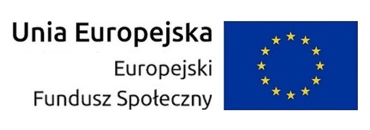Cotygodniowe seminarium badawcze
Lista referatów
-
1 kwietnia 2020 12:15
Tomasz Lipniacki (IPPT PAN)
Impact of the constant and time-varied contact rate on COVID-19 pandemic dynamic
We constructed a simple Susceptible-Infected-Infectious-Excluded model of the spread of COVID-19. The model is parametrized only by the average incubation period \tau and two rate parameters: contact rate, r_C, and exclusion rate, r_E. The rates …
-
25 marca 2020 12:15
Jacek Miękisz (MIM UW)
Matematycy o koronawirusie
Spotkanie będzie miało charakter przeglądu literatury. Jacek Miękisz przedstawi kilka artykułów z ostatnich dni, w których modelowano rozprzestrzenianie się COVID-19 (Coronavirus Disease 2019), w szczególności wykładniczy wzrost zarażeń. Z przyczyn oczywistych, seminarium odbędzie się "on …
-
11 marca 2020 12:15
M. Lachowicz (MIM UW)
The discreet charm of asymmetric interactions
Some preliminary results for the integro-differential equations modelling asymmetric interactions in social sciences will be presented.
-
4 marca 2020 12:15
Jacek Banasiak (University of Pretoria, South Africa)
Jacek Banasiak (UniversitRenormalization group and Chapman-Enskog methods in singularly perturbed dynamical systems on [0,∞)
Recently there have appeared several papers discussing applications of the so-called renormalization group method in singularly perturbed systems of equations. In this talk, I shall show that somewhat forgotten Chapman-Enskog asymptotic method leads to the …
-
26 lutego 2020 12:15
Jacek Sadowski (MIM UW)
On the Tikhonov-type theorem for a certain class of singularly perturbed differential inclusions
We are going to compare some of recent results of Tikhonov type devoted to singularly perturbed differential inclusions. The object of investigation is the lower- and the upper-semicontinuity of the set of solutions of the …
-
22 stycznia 2020 12:00
Mateusz Dębowski (MIM UW)
Mathematical aspects of the initial stage of M-phase of the cell cycle
We are going to present a specific mathematical model describing dynamics of proteins in the initial stage of M-phase of the cell cycle. We are going to show the importance and some mathematical aspects of …
-
8 stycznia 2020 12:00
Dominika Jasińska (MCSU Lublin / MIM UW)
Immigration model of infinite age-structured populations
In this talk, we will see some recent results concerning the spatial immigration model of infinite age-structured populations. Using the correlation functions instead of the backward Kolmogorov equation one can consider an infinite chain of …
-
18 grudnia 2019 12:00
Adam Błoch (Politechnika Łódzka)
Stability of compartmental disease transmission models via Lyapunov functions and basic reproduction number
Stability of the disease-free equilibrium is the crucial part of investigation of a compartmental disease transmission model. One of the most effective tools in study of stability are Lyapunov functions which in case of epidemiological …
-
11 grudnia 2019 12:00
Marcin Choiński (MIM UW)
Continuous and discrete models of epidemic spread in heterogeneous populations.
Models of spread of infectious disease in heterogeneous populations will be presented. Firstly, the case when population is homogeneous will be considered. The continuous model for this case will be introduced. Next, I will present …
-
4 grudnia 2019 12:00
Dariusz Wrzosek (MIM UW)
Mathematical models of taxis
Taxis is an oriented movement of biological cells or individuals toward gradient of some stimulus distributed in the environment. This mechanism, ubiquitous in nature, occurs at all levels of complexity of biological systems, starting from …
-
27 listopada 2019 12:00
Purnedu Mishra (post-doc MIM UW)
Mathematical modelling of anti-predator behavior in predator-prey systems
Some studies have suggested that prey species stand to benefit most by defending during predator-prey encounters, but species in nature employ anti-predator defenses at various stages of interactions with their predators. The mechanism for maintaining …
-
20 listopada 2019 12:00
Iwona Chlebicka (MIM UW)
PDEs in inhomogeneous and anisotropic spaces with general data
I would like to present an introduction to equations describing diffusion-type processes in media of complicated structure. This type of problems require to employ unconventional functions spaces. I will try to give some intuition by …
-
6 listopada 2019 12:00
Agnieszka Wiszniewska-Matyszkiel / Mirosław Lachowicz (MIM UW / MIM UW)
"The tragedy of the commons" in various aspects and theory of dynamic games and dynamic optimization / Opinion dynamics: "E pur si spera"?
-
30 października 2019 12:15
Aleksadra Puchalska / Miroslaw Lachowicz (MIM UW / MIM UW )
'Impact of exchange in nodes' mechanisms on the asymptotic properties of network transport model / Opinion dynamics: 'E pur si spera'?'
A. Puchalska (MIM UW), Mixed PDE-ODE network problem with McKendrick boundary condition; Abstract: In the talk we present a new network model with dynamics described by transport equation on edges and ODEs in vertices. Transfer …
-
23 października 2019 12:15
Dominika Jasińska / Jurij Kozicki (Maria Curie-Sklodowska University, Lublin)
Dynamics of infinite age-structured populations / A Markov process for an infinite interacting particle system in the continuum
(1) Dominika Jasińska (Maria Curie-Sklodowska University, Lublin, and MIM UW, Poland) "Dynamics of infinite age-structured populations": Abstract: A Markov evolution of an infinite age-structured population of migrants is studied. Its members are point entities characterized …
 Nie jesteś zalogowany |
Nie jesteś zalogowany |



















